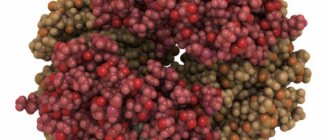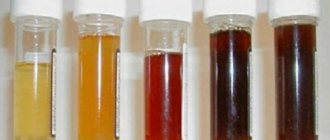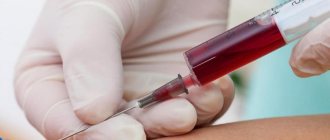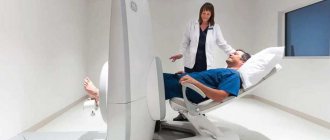If you feel unwell and suspect any disease, the results of laboratory tests are an indicator of the presence of disorders in the body. One of the important studies that help assess the condition of the human body is a biochemical analysis of urine.
A reliable result of this analysis can be obtained if you know how to give urine correctly.
When do you give urine for biochemistry?
Biochemical urine analysis (BAM) is an informative diagnostic study that determines the functional state of the urinary, hepatobiliary, and endocrine systems. Prescribed for:
- preventive examination;
- control of diuretic treatment;
- diagnosis of diseases of the genitourinary system;
- management of pregnancy;
- suspicion of hidden inflammation in the body.
The results of the analysis are interpreted by doctors of different specializations. The BAM data is deciphered most accurately by a therapist, urologist, nephrologist, obstetrician-gynecologist, pediatrician.
In what cases is it prescribed
Carrying out a biochemical analysis of urine should be considered as an important diagnostic step for identifying diseases of the endocrine, urinary, and skeletal systems. The laboratory test is designed to shed light on the metabolic features of the substances described above, which allows the doctor to comprehensively assess the severity and localization of the pathological process.
Most often, research is carried out in the following situations:
- diagnosis of diabetes mellitus type I and II;
- identification of pathology of amino acid metabolism (phenylketonuria, congenital homocystinuria);
- assessment of renal filtration function;
- confirmation of the presence of urolithiasis with the preliminary detection of oxalate salts in a general urine test;
- diagnosis of acute and chronic pancreatitis.
A laboratory test is also prescribed to pregnant women for a comprehensive assessment of their health. In the case of specific treatment of glomerulonephritis or renal amyloidosis, regular biochemical examination of urine allows us to judge the quality of the therapy used.
What the analysis shows
Urine is a biological fluid, the composition of which depends on the correct functioning of the kidneys, liver, and endocrine system organs. Based on the results of biochemical analysis, the following are diagnosed:
- urolithiasis (urolithiasis);
- pyelonephritis;
- kidney failure;
- glomerulonephritis;
- nephrolithiasis;
- toxicosis of pregnant women;
- dehydration;
- diabetes;
- electrolyte imbalance;
- liver pathologies;
- hyperfunction of the parathyroid glands.
In urine biochemistry, more than 30 different indicators are determined. Depending on the symptoms, the doctor prescribes the study of only individual organic and inorganic substances.
Mechanism of urine formation
A number of opinions have been expressed about the mechanism of urine formation and several theories have been created.
The work of I.P. was of great importance in the study of issues related to the activity of the kidneys. Pavlova, done by him back in 1883.
It was found that urine formation occurs in two phases.
The first phase is filtration. It occurs in the capsule and consists of the formation of primary urine. It is assumed that primary urine is filtered from the capillaries of the Malpighian glomerulus into the capsule cavity. In order for filtration to be possible, a significant pressure difference between the vessels and the capsule is necessary. This relatively high pressure in the Malpighian glomerulus is ensured by the fact that the renal arteries arise directly from the abdominal aorta and blood enters these vessels under high pressure. Measurements showed that the blood pressure in the Malpighian glomerulus is 60-70 mmHg.
Such high pressure in the vessels and the special structure of the capsule confirm that primary urine is filtered from the blood.
Since the formed elements of blood and the protein found in it cannot pass through the walls of blood vessels, primary urine is blood plasma without proteins.
Unlike the primary urine produced in the capsules, the urine excreted from the body is called final urine. The final urine is very different in composition from the primary urine: it no longer contains sugar, amino acids and other salts, but the concentration of substances harmful to the body, such as urea, is sharply increased.
Urine undergoes these changes in the second phase of formation, when water and some components of primary urine are absorbed from the convoluted tubules back into the blood - reabsorption.
As urine flows through the convoluted tubules of the first and second order, the cells lining the walls of these tubules actively reabsorb water, sugar, amino acids and some salts. From here, substances absorbed from primary urine pass into the venous part of the capillaries that intertwine the convoluted tubules. Urea, creatine, and sulfates are not reabsorbed.
In addition to reabsorption, secretion occurs in the tubules, that is, the release of certain types of substances into the lumen of the tubules.
As already mentioned, the composition of final urine differs sharply from the composition of primary urine. In the final urine there is no sugar, amino acids, the concentration of table salt decreases, etc. The concentration of urea increases almost 70 times. If the urea concentration in plasma is 0.03, then in the final urine its concentration is 2%.
The final urine from the pelvis enters the bladder through the ureters and is then removed from the body. During the day, a person excretes approximately 1.5 liters of urine.
Types of biochemical urine tests
Based on the results of urine biochemistry, disturbances in the functioning of the kidneys, ureters, bladder, liver, and parathyroid glands are determined. This laboratory analysis is highly informative and reliable. For a comprehensive examination, two types of BAM are used:
- Analysis of a single portion of urine - laboratory testing of morning urine. It determines the level of glucose, bilirubin, pancreatic amylase, alpha-amylase. If the indicators deviate significantly from normal values, the person is referred for further examination. An increased glucose level indicates diabetes, and bilirubin indicates inflammation of the bile ducts or liver.
- Daily urine analysis is a laboratory test of urine excreted during the day. Detects malfunctions in the functioning of the urinary system. In a daily portion of biomaterial, the concentration of creatinine, albumin, urea, and calcium is determined. The study is carried out to monitor the effectiveness of treatment of pyelonephritis, diabetes mellitus, glomerulonephritis. It is prescribed during pregnancy for the timely detection of abnormalities in fetal development.
Biochemical examination of urine allows one to assess the performance of vital organs without biopsy or surgery. To obtain objective results, prepare for the fluid collection procedure in advance.
When diagnosing urological diseases, they often resort to 24-hour urine biochemistry. This analysis provides the most accurate picture of your health status.
Why do you need a biochemical urine test and for what diseases is it taken?
Urine analysis based on biochemical parameters is most often necessary for specialists to identify diseases of the genitourinary system. After all, urine is formed in the kidneys and then, descending through the ureters, accumulates in the bladder. Once the bladder is full, all bodily fluid is eliminated through the urethra. The indicators of this fluid show the condition of all the organs that form and remove it from the body, as well as the condition of the liver, pancreas and intestines.
Using biochemical analysis, the quantitative presence of the following indicators in urine is determined:
- urine pH;
- proteins;
- nitrogenous compounds (creatinine, acetone, nitrites, urea, ketone bodies, uric acid);
- amino acids;
- ammonium salts;
- nitrogen-free substances (glucose, lactic acid);
- microelements (potassium, sodium, calcium, phosphorus);
- enzymes: alpha-amylase, gamma-glutamate transpeptidase (GGT), lactate dehydrodenase (LDH);
- albumen;
- bile pigments: bilirubin, urobilinogen;
- hemoglobin.
A difference from the norm in the amount of substances found in urine diagnoses pathological diseases of the kidneys, bladder, inflammatory processes in all organs and tissues, as well as hormonal imbalance and metabolism. In addition, such an analysis is prescribed to determine the cause of human poisoning, since narcotic and toxic substances remain in the urine for a longer time than in the blood.
How to properly collect daily urine for analysis
At the initial appointment, the doctor tells the patient how to submit daily urine for analysis. Proper preparation and collection of biomaterial prevents false-positive or false-negative results. Preparations begin 2 days before going to the clinic.
Rules for preparing for biochemical analysis:
- 2 days before urine collection, stop taking medications;
- fatty foods and alcohol are excluded from the diet;
- limit physical and psycho-emotional stress;
- refuse to visit the solarium and bathhouse;
- collection of biomaterial is carried out before endourethral procedures (ultrasound, catheterization, smear);
- maintain normal drinking regime;
- exclude foods that stain urine (carrots, beets, wild berries).
When planning an examination, you must tell your doctor what medications you take regularly or have taken within the last month. Biochemistry results are influenced by:
- metronidazole;
- herbal remedies with bearberry;
- loop diuretics;
- sulfonamides;
- hormonal contraceptives;
- aspirin;
- sulfazole;
- vitamin and mineral complexes.
If a daily urine sample is used for analysis, any travel on that day should be postponed. A change in environment and diet will lead to changes in the biochemical composition of urine, which will affect the test results.
Rules for collecting daily urine:
- Container for biomaterial. To collect liquid, use sterile plastic containers with airtight lids. Their volume must be at least 2.5 liters.
- Recording the time of fluid collection. Urine is collected 24 hours in advance. If the first portion was collected at 8-00 in the morning, then the last portion is collected at the same time the next day.
- Hygiene procedures. Before collecting urine, the genitals are washed with neutral soap.
- Collection of liquid. You should urinate in a dry and sterile small container. The container should not touch the skin, as this will cause epidermal cells to enter the liquid. A single portion is poured into a large container with a volume of 2.5-3 liters, closed with a lid and sent to the refrigerator.
When collecting 24-hour urine, the morning portion of the first day (immediately after you wake up) is not collected.
The container with biomaterial is stored on the bottom shelf of the refrigerator to prevent sedimentation. On the day of the test, the urine is shaken in a common container. No more than 200 ml of liquid is poured into a separate container with a sealed lid and sent to the laboratory.
Diagnostic measures
The informative value of a laboratory test depends on the correctness of urine collection and appropriate preparation of the patient. This is why it is so important for patients to understand their specifics.
Preparation
Three days before the test, you should stop taking foods that can affect the color of urine. The following is prohibited:
- carrot;
- beet;
- asparagus;
- blueberry.
You should also refrain from taking vitamin supplements. The information content of the procedure will decrease when women give urine during menstruation. There remains a high risk that leukocytes, blood, and particles of epithelium from the genital tract may enter the urine.
Collection algorithm
The laboratory test involves assessing the entire daily urine output. It is necessary to collect secretions for biochemical analysis of urine in a clean, dry container with a volume of 3 liters. You can purchase a sterile container from pharmacies.
Urine collection algorithm:
- The first portion of morning urine (at about 8.00) is ignored.
- The container is filled starting from the second trip to the toilet and throughout the day.
- The last dose should be the morning portion on the second day.
- The contents of the container are shaken.
- 100-200 ml of total urine is sent to the laboratory for analysis.
Properly collected secretions should be stored in a place without direct contact with sunlight at a temperature of +5-10 °C.
Certain difficulties may arise when it is necessary to conduct an appropriate examination in young children (under 3 years old). To collect liquid secretions in this case, it is recommended to use special urinals in the form of small bags that are attached with Velcro in the area of the external genitalia. You can buy such a device at any pharmacy.
Can additional studies be ordered?
Depending on the final results of the biochemical analysis of 24-hour urine, the doctor may need to use auxiliary examination methods to make a final diagnosis.
For example, protein in human urine indicates kidney dysfunction. In this case, it is necessary to additionally conduct an ultrasound examination of the relevant organs. When Bence Jones protein is detected, it is necessary to take an x-ray of the skull to document the presence of lesions in the flat bones.
Sugar in the urine requires an assessment of the individual patient's carbohydrate metabolism. To do this, an additional glucose tolerance test, a blood test for glycated hemoglobin (HbA1c), as well as a routine measurement of the amount of glucose in plasma are performed.
A high concentration of calcium in the urine indicates its removal from the body. To assess the degree of microelement loss, it is recommended to conduct densitometry - a method that allows you to determine the severity of osteoporosis as a percentage.
In 90% of cases, the doctor does not need simultaneous results for all indicators that are available when studying a biochemical urine test. Depending on the clinical situation, the specialist selects only the substances of interest to him. This saves time for the laboratory and money for the patient.
Decoding biochemistry
93-97% of urine consists of water. The remaining part comes from metabolic products - organic and inorganic substances. By assessing the composition and quantitative indicators of individual components, urological and endocrine diseases are diagnosed.
Urine enzymes
During a daily urine test, a large number of enzymes are determined. For diagnosis, the following are important:
- Amylase is an enzyme that is synthesized in the pancreas and salivary glands. Normal values are in the range of 1-17 U/l. Deviations indicate acute pancreatitis, cholecystitis, intestinal obstruction, relapses of sluggish pancreatitis. Changes in amylase levels occur against the background of stomach ulcers and alcohol intoxication.
- Gamma-glutamate transpeptidase is an enzyme that is involved in the oxidation and synthesis of amino acids. Normal (reference) values are in the range of 48-49 U/mmol CRE. An increased concentration of lactate dehydrogenase in the urine indicates liver pathology - viral hepatitis, hepacellular carcinoma, cirrhosis. Increased enzyme activity is detected in patients with diabetes mellitus, pancreatitis, mononucleosis and prostate cancer.
- Lactate dehydrogenase is an enzyme that is involved in the synthesis of lactic acid and the breakdown of glucose. Normally, its content in urine does not exceed 8300 units/8 hours. Deviations indicate inflammation and necrosis of the liver, lungs, skeletal muscles, kidneys, and heart.
To clarify the diagnosis, it is necessary to take into account the analysis data for the content of urea and creatinine in the urine.
Squirrels
In the absence of disease, protein is not detected in the urine. If protein components are detected during the analysis, this indicates a violation of the kidney filtration function, proteinuria. Its reasons include:
- multiple myeloma;
- hypertension;
- cystitis;
- urethritis;
- pyelonephritis;
- ureteral tumors;
- systemic lupus erythematosus;
- heart failure.
At rest, reference protein values do not exceed 0.08 g/day, and during intense exercise – 0.25 g/day.
Amino acids
When diagnosing urological diseases, the concentration of amino acids is of diagnostic importance. In a daily portion of urine in children and adults, their amount should not exceed 50-200 mg.
| Amino acid name | Causes of high levels in urine |
| tyrosine | ascorbic acid deficiency |
| tryptophan | deficiency of pyridoxine (vitamin B6) |
| serine | cadmium intoxication |
| hydroxyproline | pathology of bone tissue |
| leucine, cysteine | poisoning with oxalic or malic acid |
If the test results differ from normal values, this indicates a vitamin deficiency, metabolic disorder or the mechanism of reabsorption of amino acids in the kidneys.
Glucose
In a daily urine test, the glucose concentration is 2.5-2.78 mol/l. If its content exceeds the norm by 10 times, glucosuria is diagnosed. It accompanies many diseases:
- diabetes;
- hyperthyroidism;
- phosphorus intoxication;
- Cushing's syndrome;
- myocardial infarction;
- dumping syndrome;
- pancreatitis.
The results of the analysis are affected by taking medications - thyroxine, diuretics, corticosteroids, carbamazepine.
Nitrogenous substances
Organic and inorganic nitrogenous substances are involved in cell synthesis and tissue regeneration. In the biochemistry of urine, the level of various components is determined:
| Age, years | Nitrites, mol/day | Urea, mol/day | Ketone bodies, mmol/day | Uric acid, mol/day | Creatinine, µmol/kg |
| up to a year | — | 10-100 | less than 0.5 | 0.3-2.0 | 71-176 |
| 1-8 | — | 50-250 | less than 0.5 | 0.5-2.51 | 71-195 |
| 9-14 | — | 200-430 | less than 0.5 | 0.61-3.0 | 71-264 |
| from 15 | — | 400-710 | less than 0.5 | 1.47-4.4 | 97-230 |
Exceeding the normal levels of nitrogenous substances in the urine is a consequence of metabolic failures and impaired filtration function of the kidneys.
Bile pigments
During the analysis, two types of bile pigments are determined:
- Bilirubin is one of the main components of liver secretion. Normally it is not detected in urine. Increased activity of the pigment is associated with liver pathologies - cirrhosis, hepatitis, liver cancer, jaundice.
- Urobilinogen is a pigment produced in the liver from hemoglobin. Its content in urine should remain in the range of 0-35 µmol/l. An excess indicates toxic liver damage, enterocolitis, massive hematomas, and intestinal obstruction.
Increased activity of bile pigments is an indication for contacting a hepatologist. You will need to take a biochemical blood test.
Hemoglobin
Urine biochemistry normally does not reveal hemoglobin. It is found during the intrarenal or intravascular breakdown of red blood cells (erythrocytes). Hemoglobin impurities in urine indicate:
- intoxication with sulfonamides;
- general blood poisoning;
- hemolytic anemia.
Iron-containing protein penetrates into the urine in deep and extensive burns.
Microelements
The concentration of important microelements in urine is of diagnostic importance:
- Calcium – participates in the synthesis of bone tissue. The daily norm of the microelement in urine does not exceed 7.5 mmol. An excess indicates overactivity of the parathyroid glands, decreased kidney function, and osteoporosis.
- Potassium – participates in water-salt metabolism, affects the performance of skeletal muscles and the nervous system. In urine its content does not exceed 100 mmol/day. Excess potassium is associated with inflammatory kidney damage, blood transfusions, and serious injuries.
- Sodium – affects the synthesis of gastric juice, enzymes in the gastrointestinal tract, and vascular tone. Reference values for biochemical analysis of urine are 130-260 mmol/day. Deviations indicate a violation of the acid-base balance, kidney dysfunction, and diabetes mellitus.
- Phosphorus – participates in lipid and protein metabolism. The daily norm does not exceed 40 mmol. If during analysis the level of phosphorus in the urine is elevated, this indicates urate kidney stones or leukemia - blood cancer.
When interpreting the results of urine biochemistry, data from other tests and instrumental diagnostics are taken into account.
Deviations from the norm and possible causes
After completing the study, a conclusion is drawn with the results obtained. As a rule, the document takes the form of a table consisting of three columns: the first indicates the name of the indicator, the second indicates the identified value, and the third indicates the normal range.
Thus, it may seem that the patient is quite capable of independently deciphering a biochemical urine test. However, it is not. Only the attending physician can study the transcript, make a conclusion and note the presence of any deviation from the norm.
A change in the concentration of any substance in one direction or another can be considered a sign of the development of pathology. In this case, further examination of the patient using additional diagnostic methods is required.
The doctor deciphering the results:
- takes into account whether the content of substances is above or below the permissible deviation standards, and their ratio;
- compares them with data from the results of other research methods;
- determines the diagnosis and prescribes the appropriate course of treatment.
When deciphering a biochemical urine test, the following indicators are taken into account:
- Daily amount of urine excreted. This helps to assess the performance of the kidneys and identify the presence of pathological processes. If daily urine output is less than normal, this indicates the presence of kidney pathology, toxicosis or dehydration, which may be caused by insufficient daily fluid intake.
- Urine density. Low density may indicate changes in kidney function.
- Increased levels of calcium, sodium and chlorine may be a sign of diabetes, kidney disease or endocrine disorders.
- An increased level of proteins is a symptom of the presence of an infectious disease or inflammatory process. This may also indicate the body’s tendency to allergic reactions. Elevated levels of protein can be observed in humans with endocrine disorders, benign or malignant tumors.
- The presence of glucose in a urine test can be observed in diabetes mellitus or chronic kidney disease.
- A decrease in creatinine levels indicates renal dysfunction.
- Elevated urea levels can be caused by prolonged fasting, a high-protein diet, or a side effect of medications.
- A reduced urea concentration indicates acute or chronic renal failure. During the period of active growth of the child, reduced urea levels may also be observed.
- An increased level of uric acid is a sign of gout; a decreased level indicates the development of a pathological process in the genitourinary system, impaired liver or kidney function.
- A deviation of the phosphorus level from the norm to a lesser extent is a symptom of the development of a pathological process in the kidneys or bone tissue, and also indicates malnutrition. An increase in the content of this microelement in urine indicates rickets, urolithiasis, as well as poor motor activity. An increased level of calcium in the urine may indicate problems with bone tissue and problems with the urinary system.
- Potassium levels depend on a person’s age and diet. For example, the amount of potassium in a urine test in a child will be lower than in an adult. One of the factors that influenced the deviation of values from the norm may be a change in metabolic processes due to intoxication of the body.
- An elevated magnesium level can be caused by taking certain types of medications and drinking alcoholic beverages. Also, an increased value of this microelement may indicate pathological abnormalities in kidney function. A decrease in magnesium levels may be a symptom of severe renal failure, pancreatitis, and diabetes mellitus.
- An increased level of pancreatic enzyme (amylase) indicates a predisposition to the development of gastric and duodenal ulcers.
- An increased level of chlorine indicates dehydration of the body, and a decreased level indicates pathology of the adrenal glands and kidney diseases.
What affects the accuracy of the results
Before collecting urine for biochemical analysis, you need to eliminate all factors that affect the result. The accuracy of the resulting data depends on:
- on the correct preparation and collection of biomaterial;
- compliance with urine storage rules;
- taking medications.
You should temporarily refuse to take the test if:
- recurrence of colds;
- menstruation;
- hypertensive crisis.
It is advisable to carry out BAM before instrumental examination - cystoscopy, ultrasound of the kidneys, radiography.
Approximate prices for analysis in Moscow
Urine biochemistry is a set of microscopic tests that is used to assess general health. The cost of the procedure depends on the type of analysis and the number of indicators determined:
| Type of analysis | Cost in rubles |
| alpha amylase | 50-1403 |
| nephrological complex | 300-2800 |
| glucose (daily urine) | 70-1403 |
| urobilin | 65-630 |
| calcium | 50-1403 |
| microalbumin | 85-2310 |
| oxalates | 150-3500 |
| creatinine | 70-1403 |
| sodium | 100-1620 |
BAM is an informative laboratory test that reflects the correct functioning of the urinary, hepatobiliary and endocrine systems. Based on the results of the analysis, the performance of individual organs (kidneys, pancreas, liver) and metabolic disorders are assessed.
Analysis of microflora and sensitivity to antibiotics
This test is prescribed if a urinary tract infection is suspected. The analysis determines the presence of microorganisms, as well as their sensitivity to antibacterial therapy.
Collection rules
A sterile jar is used to collect urine. It is necessary to thoroughly clean the external genitalia. For analysis, you need an average portion of urine, which is collected in the same way as in the Nechiporenko analysis. In some cases, if the test result is questionable, urine collection with a catheter is possible. If you are already taking antibiotics, you should tell your doctor about this.
Top{amp}gt;{amp}gt;{amp}gt;











